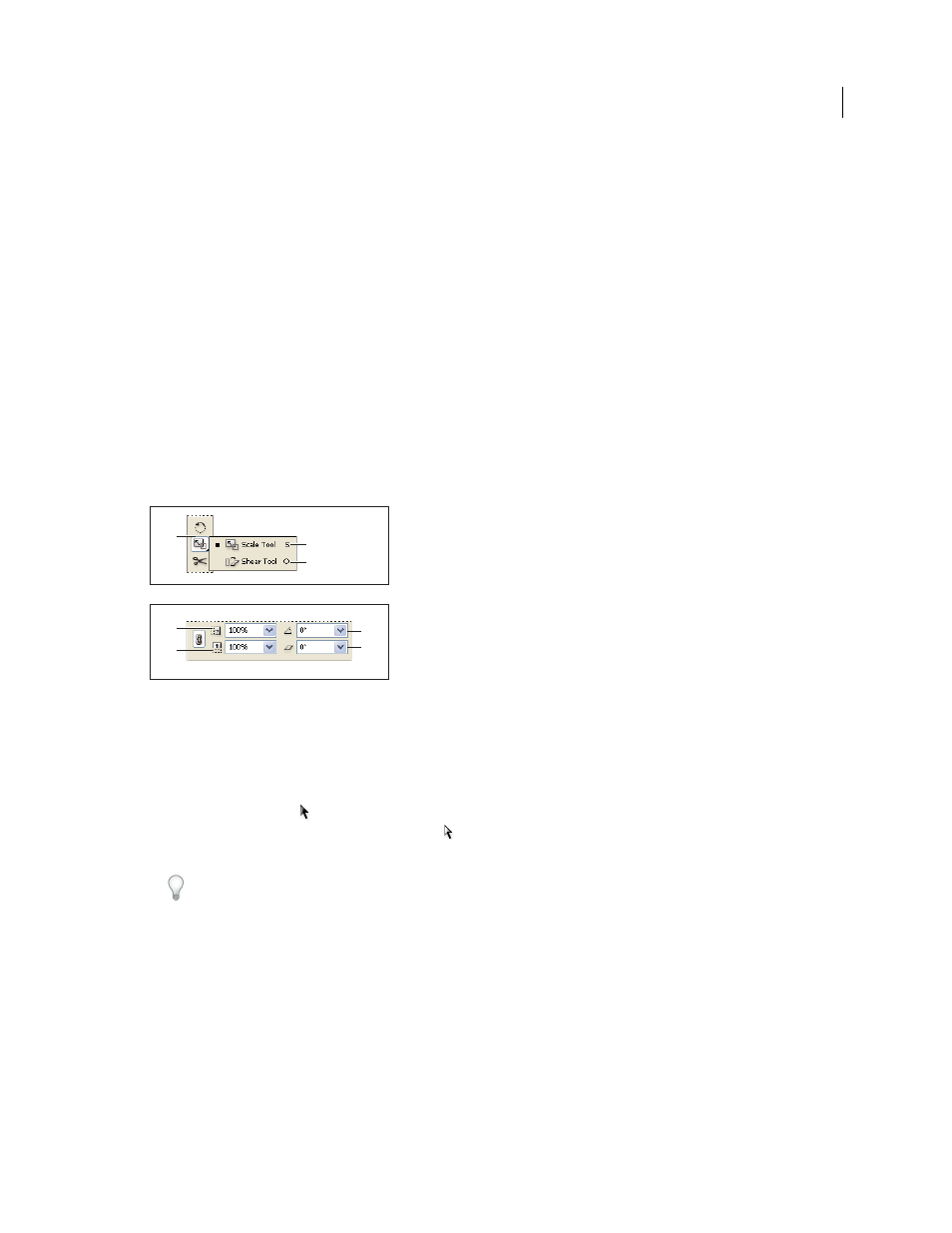Transform objects, 412 and – Adobe InDesign CS5 User Manual
Page 418

412
USING INDESIGN
Frames and objects
Last updated 11/16/2011
Note: This option does not change how stroke weights are affected when scaling a frame, only whether any changes affect
measurements.
❖
In the Transform or Control panel menu, do one of the following:
•
Select Dimensions Include Stroke Weight when you want panel measurements to represent the outer edge of an
object’s stroke. For example, if one frame is 2 points shorter than the other, but the shorter frame’s stroke is 2 points
thicker, this setting will cause both frames to display the same height values in the Transform and Control panels.
•
Deselect Dimensions Include Stroke Weight when you want the panel measurements to represent an object’s path
or frame regardless of its stroke weight. For example, two frames of the same height will display the same height
values in the Transform and Control panels, regardless of differences in their stroke weights.
Transform objects
You can modify an object’s size or shape, and change its orientation on the pasteboard, by using tools and commands.
The toolbox includes four transformation tools—the Rotate, Scale, Shear, and Free Transform tools. In addition, you
can use the Selection tool to transform objects. All transformations, with the addition of reflection, are available in the
Transform and Control panels, where you can precisely specify transformations.
Transformation tools (top) compared to Transform panel (bottom)
A. Rotation options B. Shearing options C. Scaling options
When transforming objects, note the following:
•
The results of a transformation can differ significantly, depending on what is selected. For example, when you
rotate an image, what gets rotated depends on whether you select the image, the frame, or the frame and the image.
Use the Selection tool
to transform (rotate, scale, or shear) an entire path and its content (click outside the
content grabber); use the Direct Selection tool
to transform just the path without its content or the content
without its path. To transform the content without its path, make sure that all anchor points are selected.
To resize both the frame and content, use the Scale X Percentage and Scale Y Percentage fields, not the W and H
fields. The W and H fields change only the selected frame or content, not both. Keep in mind that you’re not limited
to specifying percentages in the Scale fields. You can type dimensions by including the unit of measurement, such as
“6p.”
•
A transformation affects all selected objects as a single unit. For example, if you select multiple objects and rotate
them 30°, they all rotate around one reference point. If you want to rotate each selected object 30° around its own
reference point, you must select and rotate them individually.
•
When transforming type, you can use either of two selection methods: Use the Selection or Direct Selection tool to
select an entire text frame or text converted to outlines, and then use the transformation tools; or use the Type tool
to select text or to click an insertion point in a text frame, and then specify transformations in the Transform panel,
Control panel, or dialog boxes available when you double-click a tool. In both cases, the transformation affects the
entire text frame.
C
A
C
C
B
A
B
